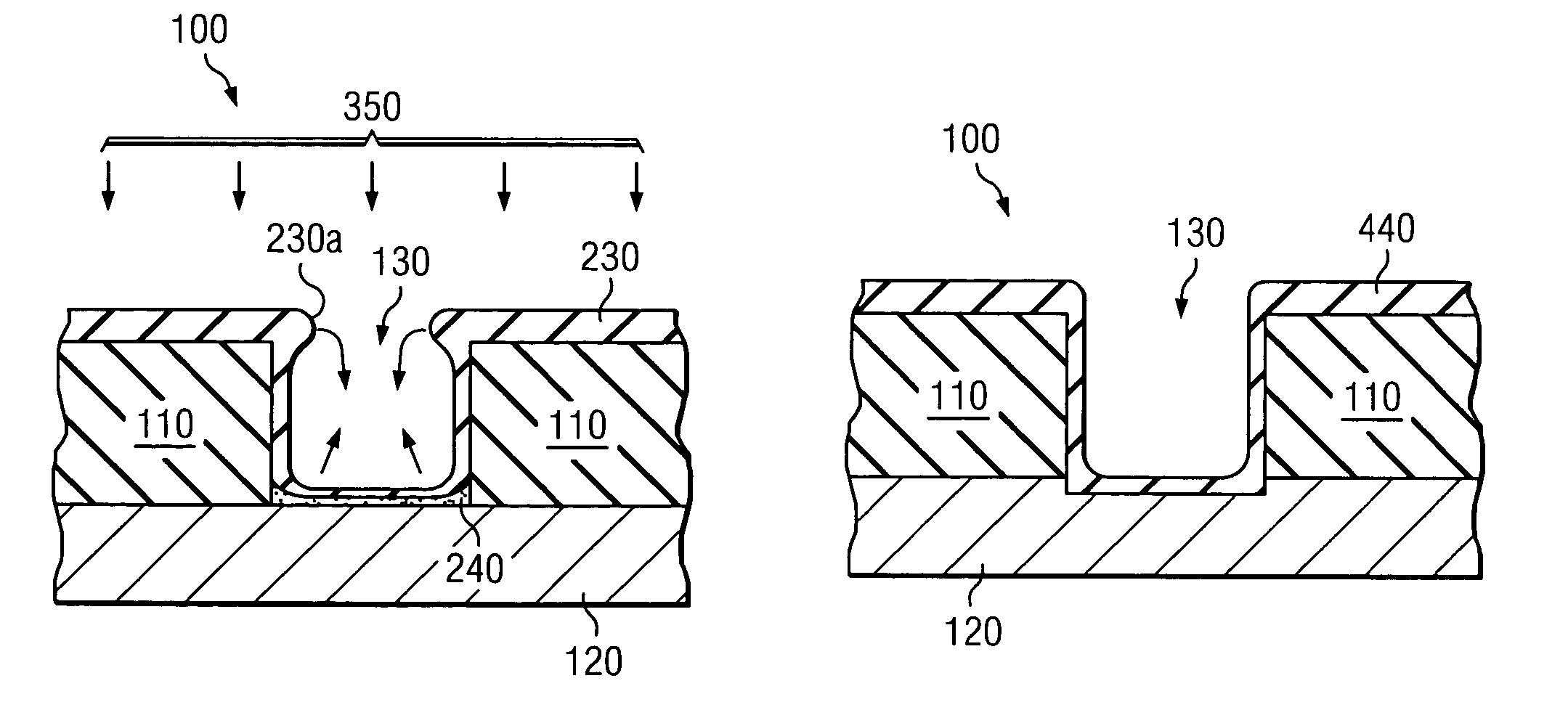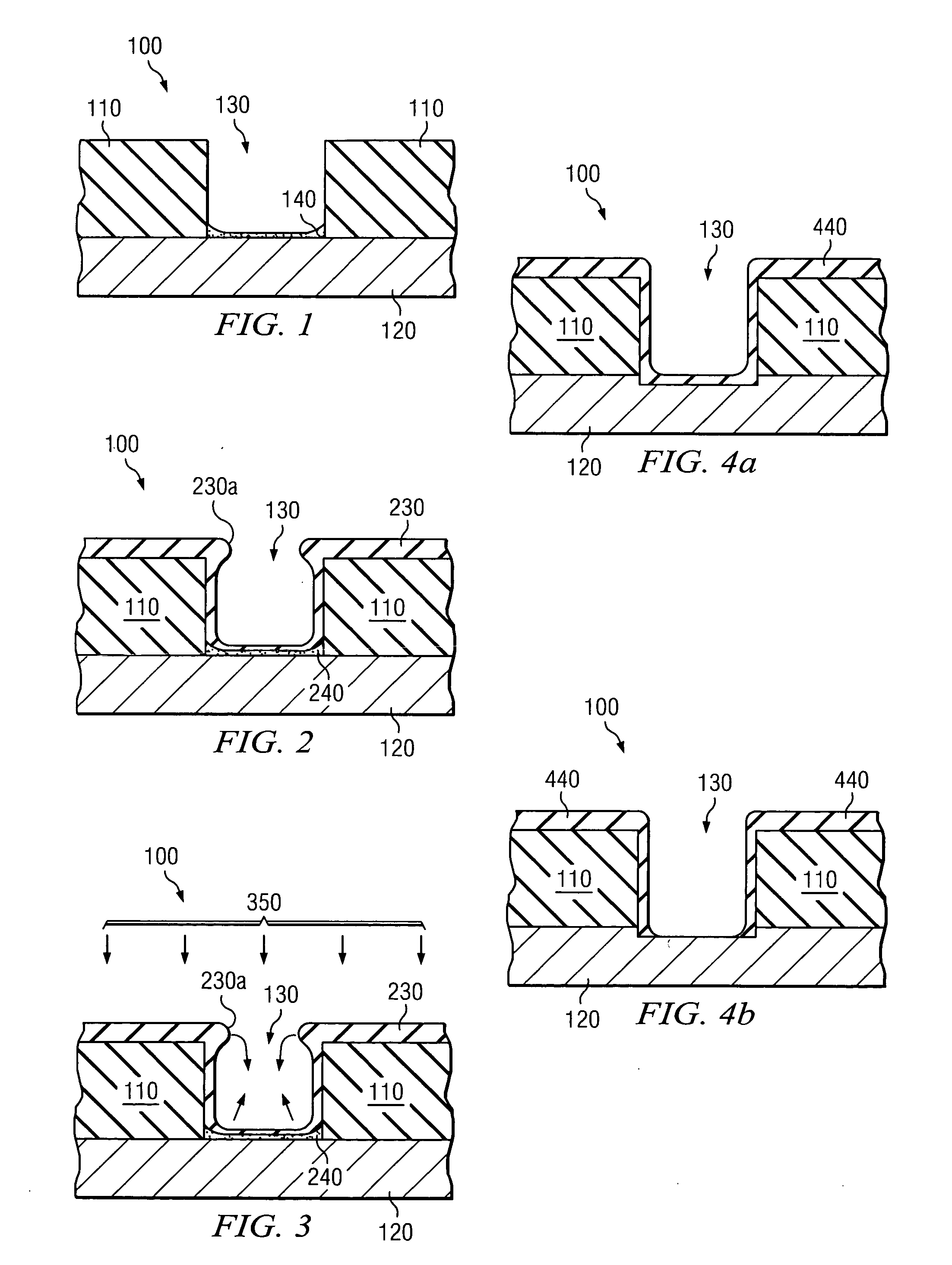Contact resistance reduction by new barrier stack process
a technology of contact resistance and barrier stack, which is applied in the direction of semiconductor/solid-state device manufacturing, basic electric elements, electric devices, etc., can solve the problems of reducing device reliability, reducing the ability to deposit continuous films, and reducing the reentrant profile, so as to reduce the reentrant profile
- Summary
- Abstract
- Description
- Claims
- Application Information
AI Technical Summary
Benefits of technology
Problems solved by technology
Method used
Image
Examples
Embodiment Construction
[0026] Referring initially to FIG. 1, illustrated is a sectional view of a semiconductor device 100 at an early stage of manufacture. A dielectric layer 110 overlies conductive layer 120. Dielectric layer 110 may be a conventional dielectric used to space the semiconductor devices from the first interconnect level, such as phosphorous-doped silicon dioxide. However, the presently claimed invention is not limited to a particular dielectric and doping. Conductive layer 120 may also be formed conventionally, and further may be a metal silicide such as NiSi, though one skilled in the art will appreciate other compounds of a metal and semiconductor could also be used as the conductive layer. Opening 130 has been formed in dielectric 110 by conventional means, after which contamination 140 may be present at the bottom of the opening 130. The sidewalls of opening 130 are shown as substantially vertical. In practice, however, the sidewall may have some slope, with the width of opening 130 g...
PUM
 Login to View More
Login to View More Abstract
Description
Claims
Application Information
 Login to View More
Login to View More - R&D
- Intellectual Property
- Life Sciences
- Materials
- Tech Scout
- Unparalleled Data Quality
- Higher Quality Content
- 60% Fewer Hallucinations
Browse by: Latest US Patents, China's latest patents, Technical Efficacy Thesaurus, Application Domain, Technology Topic, Popular Technical Reports.
© 2025 PatSnap. All rights reserved.Legal|Privacy policy|Modern Slavery Act Transparency Statement|Sitemap|About US| Contact US: help@patsnap.com



